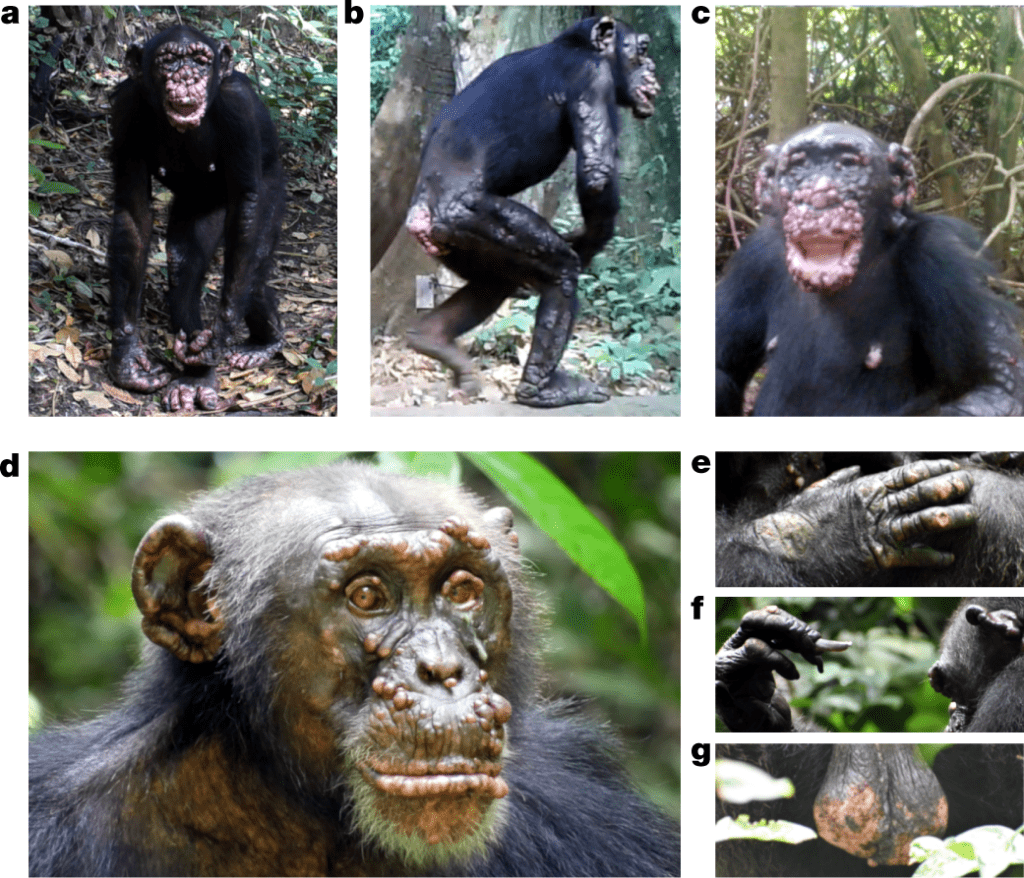Leprosy, an ancient disease that stretches back to Biblical times, has now been detected for the first time among wild chimpanzees in West Africa. The cases were confirmed among two unconnected groups of chimps in the Ivory Coast and Guinea-Bissau, carrying two different strains that are both uncommon among humans.

The disease is caused by a bacterium, Mycobacterium leprae, a relative of the tuberculosis bacteria. It survives by invading the cells and taking over their functions in order to replicate. Symptoms following infections tend not to appear for years to two decades, which start with pale-looking lesions that later progress in disfigured limbs.
Although it sounds horrible, leprosy is no longer the highly contagious and devastating disease of past times. It’s no longer easily transmissible and usually needs months of close contact – with 95% of humans estimated to be naturally immune to infection. It’s curable through antibiotic therapy and improvements in sanitation have made it very rare. Nevertheless, 200,000 cases were reported in 2019 from 161 countries.
Back in the 1970s, researchers found that humans weren’t the only hosts for the disease. Armadillos (Dasypodidae) in the Americas can carry it too, with reported episodes of them infecting humans. Previous studies showed captive chimpanzees could also contract the disease, but this hadn’t been officially awknoledged – until now.
“This is the first confirmation of leprosy in nonhuman animals in Africa,” lead author Dr. Kimberley Hockings, of Centre for Ecology and Conservation at the University of Exeter, said in a statement. “It’s amazing that it also happens to be in our closest living relative, the chimpanzee, especially considering how well studied chimpanzees are in the wild.”
Studying chimps
Hockings and a group of researchers from the University of Exeter and the Robert Koch Institute were studying wild chimpanzees in West Africa in 2018 when they noticed leprosy-like lesions on a chimp named Woodstock. This made them wonder if other chimps from the same community or elsewhere had also developed symptoms.
This was, in fact, the case. They went through tissue samples after the death of another chimp, Zora, from a leopard attack, and found traces of leprosy. An examination of photos of Zora also showed skin deformities and her fecal samples suggested the infection started seven years earlier. More cases were later confirmed among two distant chimp communities.
The strains in each community are different from each other and rarely found in people or in other known animal reservoirs. The chimps don’t spend much time around humans, so transmission doesn’t seem much likely. This raises the possibility of leprosy being transmitted between different animals, with the chimps getting them from these unknown hosts.
The researchers observed over 400 chimpanzees in the community where Woodstock lives but only identified four cases, so good news on that front. But chimps don’t have access to antibiotics like humans do, so researchers fear that endemic leprosy can still affect them. That’s why they call for further research on leprosy among wild chimp populations.
“Western chimpanzees are critically endangered, so even the loss of a few individuals could be significant,” said Dr Hockings.
The study was published in the journal Nature.






